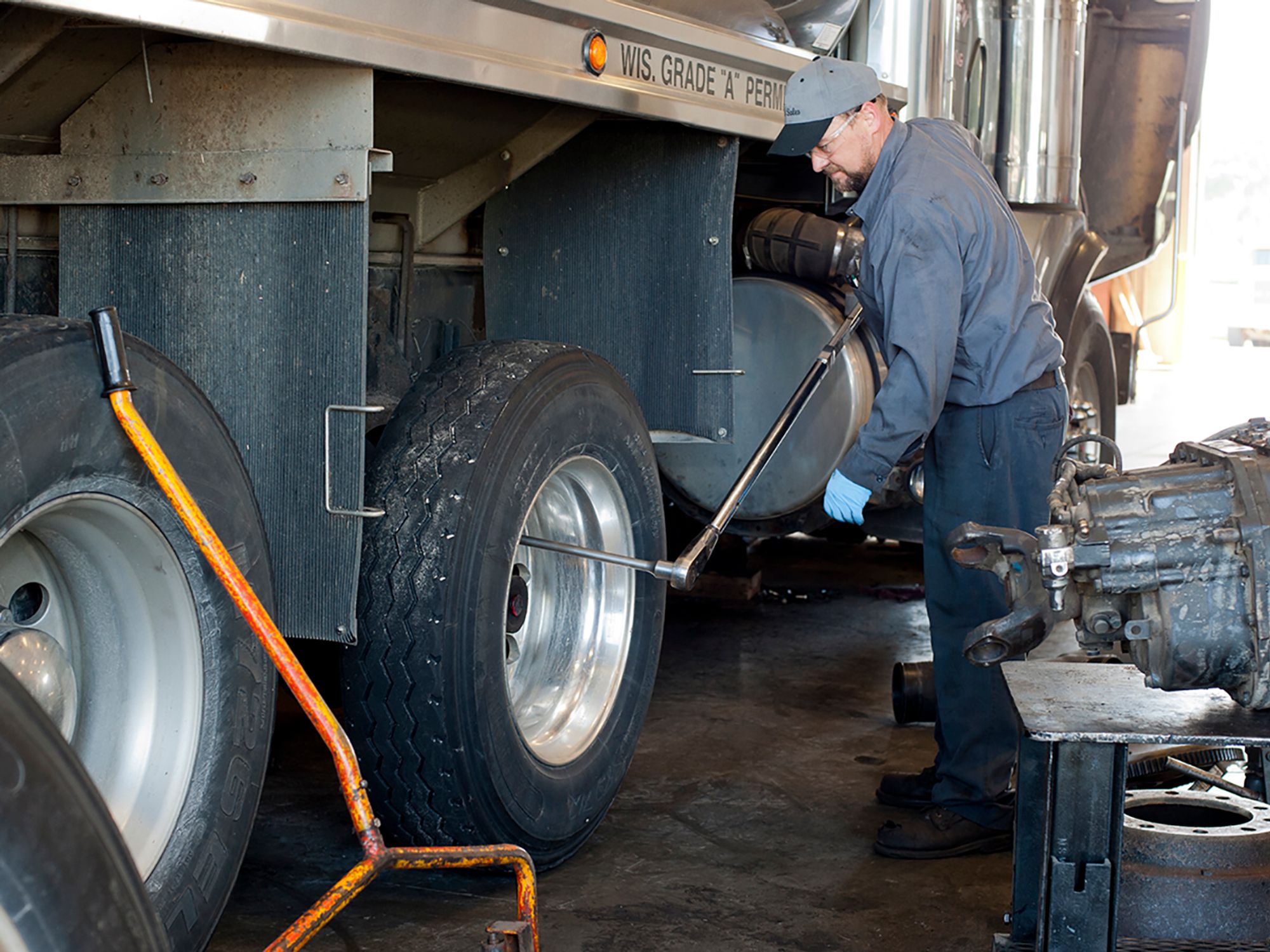Sample PM schedule

- PM services are commonly designated as A, B, C, D, etc., with each successive letter representing an increase in the complexity of the PM service (and time required).
- While PM A services are usually scheduled at one half the oil change interval and are known as a “maintenance check-out,” PM Bs include all PM A items and also an oil and filter change, as well as more in-depth checks of the engine and driveline.
- PM C service includes all A and B items and a more extensive services, such as alignment, vehicle component replacement, and scheduled engine and driveline component inspection or replacement.
The actual maintenance portion of preventive maintenance (PM) is composed of scheduled and standardized inspections and maintenance. This is sometimes referred to as the vehicles’ “scheduled service,” or simply “service.” PM services are commonly designated as A, B, C, D, etc. Under the normal system, every letter you move up into the alphabet represents an increase in the complexity of the PM service (and time required).
PM A services are also known as a “maintenance check-out” or “safety inspection” and generally consist of a safety check and lubrication as well as checks of key components such as brakes, lights, tire condition and inflation, and fluids. It also includes checking and adjusting high wear components. Typically, these PM A services are scheduled at half of the oil change interval of the vehicle. The normal interval for A service is between 1,500 and 2,500 miles on light vehicles, and between 5,000 and 10,000 miles on medium and heavy-duty vehicles.
Note: Some companies use an “inspection lane” and perform an A service every time the vehicle returns to the maintenance facility.
PM Bs normally include all PM A items, and also include an oil and filter change, as well as more in-depth checks of the engine and driveline. The normal interval for B service is 3,000 to 5,000 for light duty vehicles and 10,000 to 20,000 for medium and heavy-duty vehicles. A PM B should also include a download of the engine control module (ECM) and action on any trouble codes or problems reported by the ECM (if applicable).
With the long oil change intervals seen in some applications using certain oils (such as large diesel engines using synthetic or semi-synthetic oils), a new concept is emerging called the “dry service” or the “dry PM B.” This involves doing all the inspection and service items involved in a PM B at the previously established interval, except changing the oil. The engine oil and filters are only changed during a PM B when the vehicle has exceeded a specific number of miles or hours. A normal rotation is one dry PM B, then a wet PM B. The full sequence of PM As and PM Bs in a program using wet and dry PM Bs would be: PM A, dry PM B, PM A, wet PM B, PM A, dry PM B, and so on.
An additional consideration with passenger-carrying vehicles is that the pushout windows, emergency doors, and emergency door marking lights must be inspected once every 90 days. If the vehicles will not be undergoing PM Bs within 90 days, then this inspection item will need to be included in the PM A inspections for these vehicles.
PM C service calls for both A and B service items and a more extensive service (i.e., alignment, vehicle component replacement, scheduled engine and driveline component inspection or replacement, etc.). Many carriers will also do the DOT annual inspection required by 396.17. Normally, C services are scheduled at least annually, due to the annual inspection requirement in 396.17. To make sure they are done in a timely manner, it is not unusual for carriers to schedule them on an 11-month schedule. Carriers based in California, where there is a 90-day inspection requirement in the state law, will normally schedule at least the inspection portion of the C services for every three months.
PM D service is either a scheduled rebuild or replacement of a major component (i.e. engine, transmission, axle) or a “special” service. Examples of “special service” are seasonal service (winterization or summerization) and scheduled upgrade services. Scheduling of D services varies by company. The D designation may or may not be used, depending on the company.
Companies continue the lettering system based on their needs. Some companies go as far as PM L.
